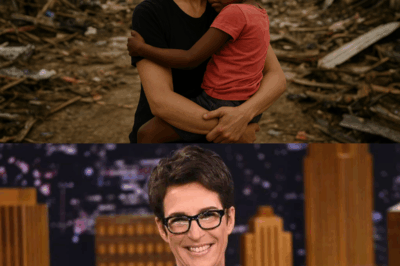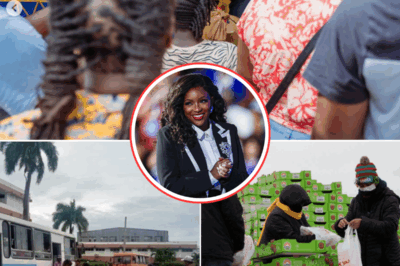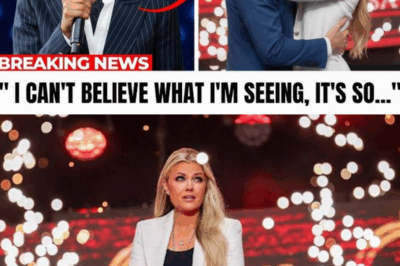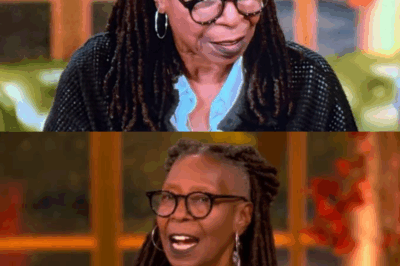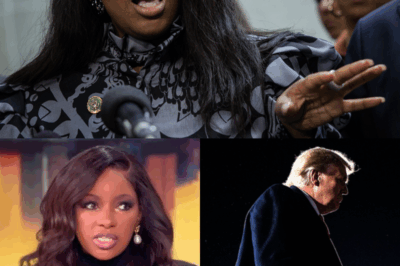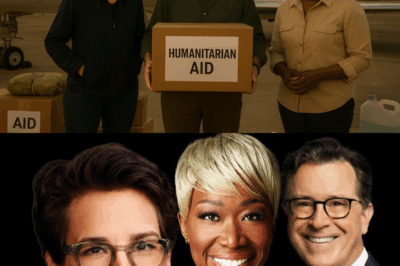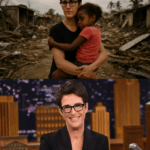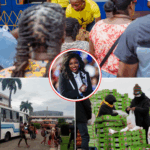The assassination of Charlie Kirk on September 10, 2025, at Utah Valley University (UVU) was a tragedy that sent shockwaves through the political and cultural landscape of America.
Kirk, the founder of Turning Point USA and a leading conservative voice, had built his career on bold debates and unapologetic public engagements, drawing massive crowds to his “Prove Me Wrong” campus tours.
But what began as another day of fiery discourse ended in bloodshed, leaving behind unanswered questions, shattered trust, and a chilling sense of vulnerability.
Now, newly surfaced footage of Kirk’s security team before the fatal shooting has raised serious doubts about the official narrative and sparked widespread speculation about what really happened that day.

For weeks, the public was told that Kirk’s security was tight, his team prepared, and the situation under control. Yet this footage paints a very different picture.
It reveals gaps in security protocols, unusual movements, and decisions that don’t seem to align with the severity of the threats Kirk faced.
What was once seen as a tragic but straightforward act of violence is now surrounded by uncertainty, with many wondering whether Kirk’s death was preventable—or even if there’s more to the story than we’ve been told.
The Rising Threats Leading Up to UVU
By 2025, Charlie Kirk had become one of the most polarizing figures in American politics. His campus tours drew thousands of supporters and just as many protesters, creating a volatile environment wherever he went.
Alongside his growing fame came a darker reality: an escalating wave of threats. In the weeks leading up to his appearance at UVU, Kirk’s team reported receiving thousands of death threats, many of them disturbingly specific.
Security professionals warned him repeatedly about the risks, urging him to adopt stronger precautions.
Chris Herzog, a veteran security expert who had worked with high-profile figures like Kim Kardashian, went so far as to tell Kirk that there was a “100% likelihood” of an assassination attempt without significant upgrades to his security.
Herzog recommended portable ballistic glass panels, rooftop surveillance, and even basic measures like handheld metal detectors.
He also advised Kirk to wear a bulletproof vest, but Kirk refused, insisting on maintaining his brand of accessibility and openness.
This decision, while central to his persona, left him exposed to the very dangers he had been warned about.
The Flawed Security Setup
The security arrangements at UVU were alarmingly inadequate, especially given the scale of the threats Kirk faced.
His protection was handled by the EE Schaffer Security Group (SSG), a firm founded by former FBI agent Greg Schaffer and former police chief Brian Harpole.
SSG had worked with Kirk in the past, but their contract had ended in 2022 due to disagreements.
They were rehired at the last minute for the UVU event, a decision that has since drawn scrutiny.
On the day of the event, SSG deployed six to eight agents, many of them highly trained veterans of federal agencies and special operations units.
They wore white shirts for visibility and used Metarban smart glasses capable of recording video in real time.
However, their focus was on close protection rather than wide perimeter surveillance, leaving critical blind spots.
The UVU police department, responsible for crowd control and perimeter security, provided just six officers—about 25% of the entire campus police force.
No officers from the city of Orem were present until after the shooting began. Worse still, no rooftop sweeps were conducted, despite the fact that the shooter ultimately positioned himself on a building just 200 yards away.
Security experts have since described the UVU setup as “deeply flawed” and “not even close to what it should be.” Compared to other stops on Kirk’s tour, the contrast is stark.
In Visalia, California, for example, there were 60 police officers, metal detectors, and drones monitoring the perimeter.
At UVU, there were no advanced precautions, no barriers against long-range fire, and no measures to screen attendees for weapons. The result was an environment ripe for disaster.

The Fatal Shot and Immediate Chaos
The event began as usual, with Kirk standing on stage in UVU’s outdoor courtyard, engaging in lively debates with students.
Nearly 3,000 attendees packed into the space, buzzing with energy under the September sun.
But at exactly 12:23 p.m., everything changed. A single sniper bullet fired from an elevated rooftop pierced Kirk’s neck, severing vital arteries.
The courtyard erupted into chaos. Students screamed, some diving to the ground while others ran in every direction.
Within seconds, Kirk’s private security team sprang into action. Positioned directly behind him on stage was Dan Flood, the head of risk strategy for Turning Point USA.
Alongside other agents, Flood formed a human shield around Kirk, attempting to apply pressure to his wound while evacuating him to a waiting SUV parked nearby.
Footage shows agents carrying Kirk off stage, their hands pressed against his neck, but critics have since questioned their response.
Some have pointed to the apparent lack of visible blood on the hands of security personnel as evidence that proper pressure wasn’t applied—or worse, that the scene was staged.
Experts, however, argue that in high-adrenaline situations, procedures often break down, and the priority becomes evacuation rather than stabilization.
Kirk was rushed to Temponogos Regional Hospital, five miles away, but he was pronounced dead less than two hours later from massive blood loss.
The decision to transport him in a private vehicle rather than wait for paramedics has been heavily criticized.
Security consultant Chris Herzog called it a “haunting failure,” arguing that advanced medical care in those critical first minutes might have saved Kirk’s life.
But SSG defended their actions, stating that with bullets possibly still in play and no ambulances nearby, speed mattered most.
The Footage That Changed Everything
In the days following the assassination, footage of Kirk’s security team before the shooting began to surface online, sparking a wave of speculation and conspiracy theories.
One clip shows an agent tapping his Metarban smart glasses moments before the shot was fired, a gesture that some have interpreted as a signal to the shooter.
Another video shows the same agent adjusting his sleeves, a seemingly ordinary movement that has been scrutinized as suspicious.
To many, these actions looked routine, but to others, they felt like evidence of foreknowledge—or even coordination.
The footage has also fueled theories about the absence of proper security measures. Why were there no rooftop sweeps?
Why was the perimeter left so vulnerable? And why did Kirk’s team fail to adapt their protocols to the escalating threats?
These questions have cast a shadow over the official narrative, leaving many to wonder whether Kirk’s death was the result of negligence, incompetence, or something far more sinister.
The Broader Implications
While the conspiracies surrounding Kirk’s assassination continue to dominate online discourse, the real story lies in the systemic failures that allowed this tragedy to happen.
Kirk’s insistence on open and lightly secured events was a gamble that ultimately backfired, but the responsibility does not rest solely on his shoulders.
The hybrid security model, the lack of coordination between private contractors and local police, and the failure to anticipate the risks of an outdoor event surrounded by rooftops all contributed to the disastrous outcome.
In the wake of Kirk’s death, Turning Point USA has implemented sweeping changes to its security protocols.
Future events now include metal detectors, bag checks, and increased law enforcement presence.
But the broader implications of his assassination extend far beyond one organization. Kirk’s death has become a symbol of the dangers faced by public figures in an era of heightened political polarization and violence.
It has sparked a national conversation about the fragility of public life and the measures needed to protect those who dare to lead within it.
A Legacy Shrouded in Questions
Charlie Kirk’s assassination was a tragedy that left behind more questions than answers.
The newly surfaced footage of his security team has only deepened the sense of uncertainty, challenging the official narrative and fueling speculation about what really happened that day.
Whether you see negligence, incompetence, or conspiracy in the footage, one fact is undeniable: the systems meant to protect Kirk failed, and the consequences were devastating.
As the investigations continue, Kirk’s death serves as both a cautionary tale and a call to action.
It is a reminder of the dangers of political violence, the importance of robust security, and the cost of standing exposed in a divided world.
For his supporters, Kirk was a fearless advocate for free speech and conservative values. For his critics, he was a polarizing figure whose rhetoric often inflamed tensions.
But in the end, his assassination transcends politics, leaving behind a legacy of shattered trust and lingering questions that may never be fully answered.
News
💔 “SHE DIDN’T PLAN TO BE A HERO — SHE JUST COULDN’T WALK AWAY.” 🌧️ When Rachel Maddow landed in Jamaica to cover the aftermath of Hurricane Melissa, she expected devastation. What she didn’t expect… was her. A little girl, barefoot in the wreckage, clutching a soaked teddy bear and whispering one word: “Mama.” Reporters looked away. Cameras kept rolling. But Maddow — silent, trembling — stepped forward. That night, she stayed. Days later, she signed the papers that changed both their lives forever. Now, as the world reacts to her unexpected act of love, one haunting question remains: Was this journalism… or destiny?|KF
1. The Storm That Took Everything The storm had no mercy. Hurricane Melissa tore through Jamaica with winds that howled…
😱 “NO CAMERAS. NO PRESS. JUST ACTION.” 💥 When Hurricane Melissa left Jamaica in ruins, everyone expected statements — not silence. But that night, Rep. Jasmine Crockett made a call no one knew about. Hours later, a private shipment — blankets, medicine, and water filters worth $500,000 — quietly left U.S. soil. No press release. No credit. Just a note inside the first box that made rescuers burst into tears. Now, the world wants to know: what did she write?|KF
When Hurricane Melissa finally loosened its grip on Jamaica, what remained was not silence but the faint hum of survival…
💥 “THE TAPES WERE NEVER MEANT TO LEAVE THE BUILDING.” 😳 A Turning Point USA insider has come forward — and what they just leaked about Erika Kirk and the Chief of Staff is sending shockwaves through conservative media. Behind closed doors, secret recordings. Late-night meetings. Deleted emails that someone thought were gone forever. And now, the story is unraveling — faster than anyone can contain it. The insider’s confession doesn’t just expose one scandal… it hints at a network of cover-ups stretching far beyond TPUSA. 👀 Either way, the receipts are coming — and they could change everything. 👉 Full leaked details in the comments (CMT) before they disappear… 🔥👇👇|KF
Late last night, an anonymous insider from Turning Point USA (TPUSA) dropped a bombshell that has sent shockwaves through conservative…
“LIVE MELTDOWN ON NATIONAL TV” — WHOOPI GOLDBERG’S EXPLOSIVE MOMENT LEAVES ‘THE VIEW’ IN CHAOS 😱💥 It started like any other morning at The View. Laughter. Headlines. Controlled chaos. Then — a single note changed everything. As producers slipped Whoopi Goldberg a message mid-segment, cameras caught something no one was supposed to see. With a glare sharper than a knife, she snatched the paper, ripped it to pieces, and tossed it aside — live, unedited, and on national television. The studio froze. Her co-hosts went silent. Viewers at home could feel it — that thick, electric tension pulsing through the screen|KF
Inside Whoopi Goldberg’s Live Meltdown — and the Crisis Shaking Disney’s Daytime Empire It started with a folded piece of…
💥 “NO CAMERAS. NO PRESS. JUST THREE NAMES THE WORLD THOUGHT THEY KNEW.” 🌪️ When the Category-5 monster Hurricane Melissa tore through Jamaica, help was nowhere in sight. Then — without a single announcement — a private jet touched down at dawn. Inside: Rachel Maddow. Stephen Colbert. Joy Reid. No sponsors. No cameras. No entourage. They brought 5 tons of food, medicine, water filters, and $1.5 million in aid, all paid from their own pockets. Locals said they worked through the night — lifting boxes, feeding children, treating wounds — not a single word about fame or press. And when a volunteer asked why they came, Joy Reid quietly answered: “Because the news doesn’t need to cover this — humanity does.” By morning, they were gone. No selfies. No headlines. Just whispers spreading across the island — “Were those really them?” Nobody knows who leaked the flight manifest. But one thing’s certain: this wasn’t charity. This was rebellion — against the silence of comfort. 🕯🌎 👇 Full uncovered story before it disappears…|KF
No cameras. No sponsors. Just three journalists who decided to act, not speak. When Hurricane Melissa struck Jamaica — the…
End of content
No more pages to load

